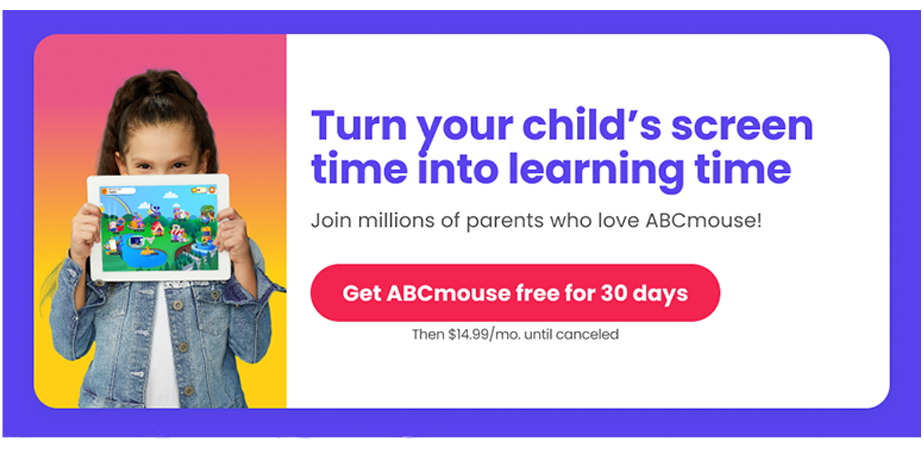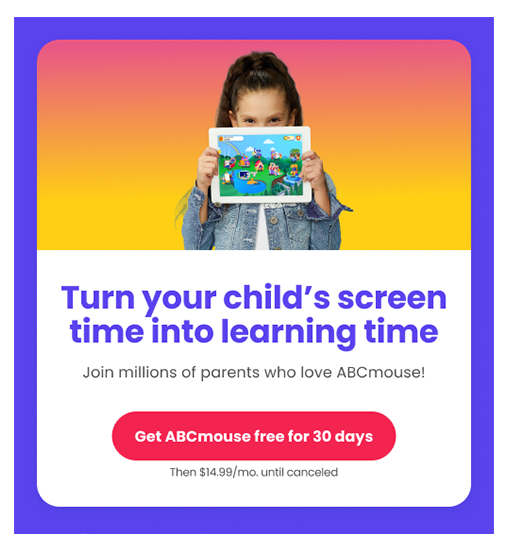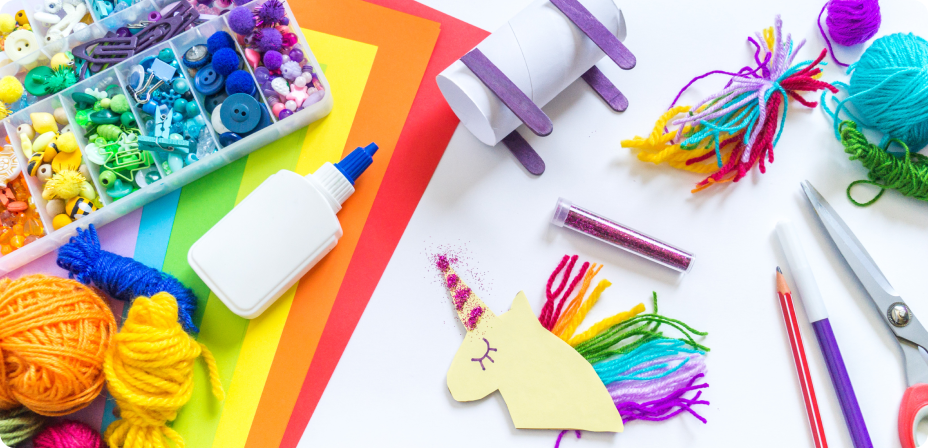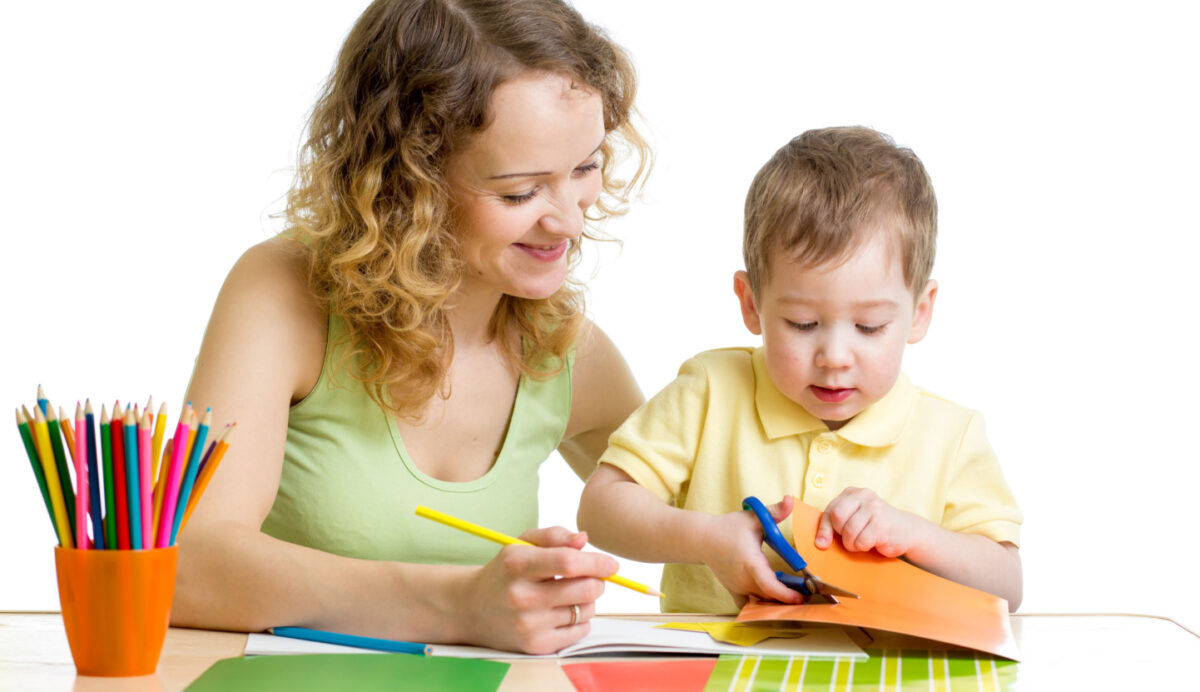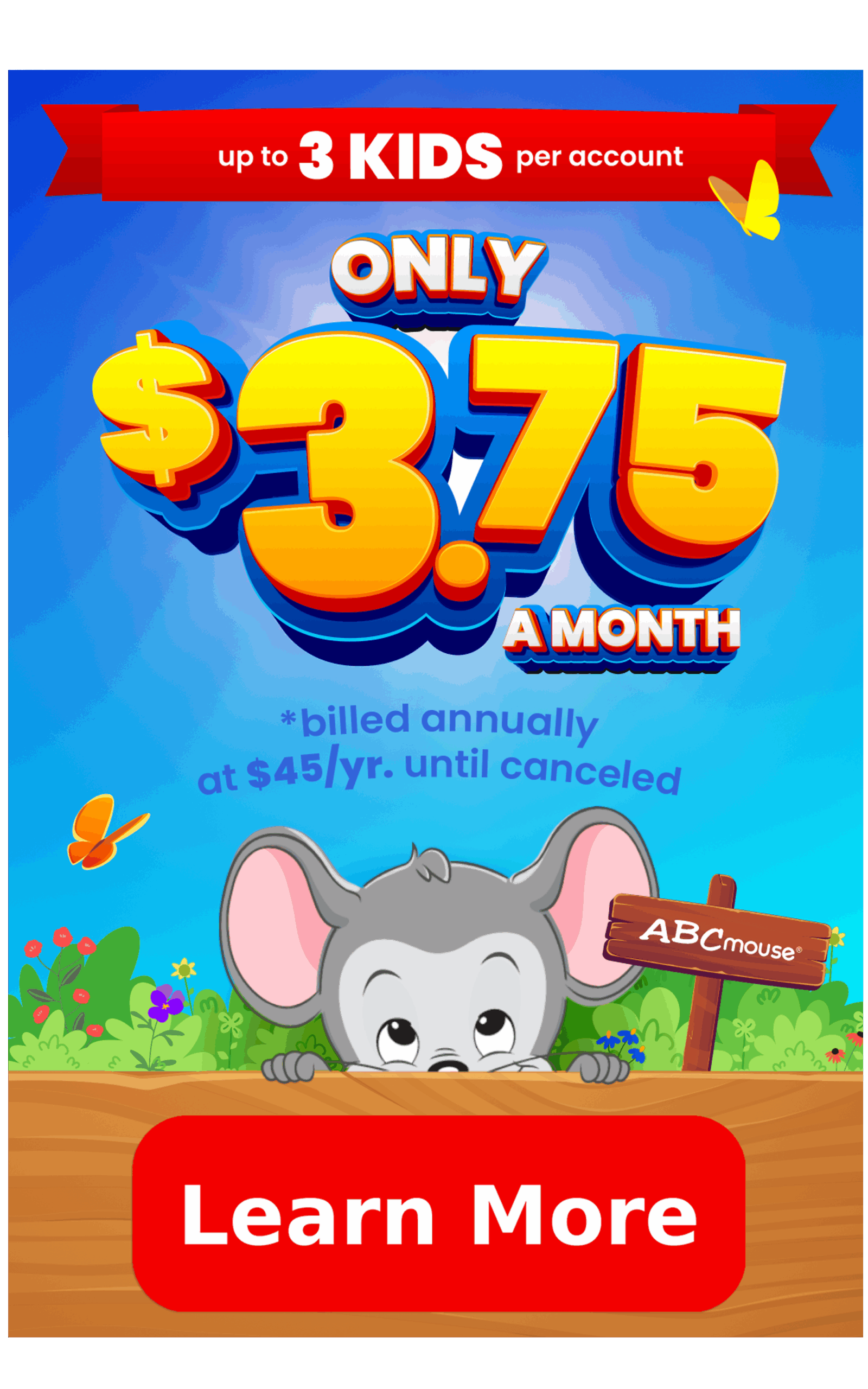Engaging Shape Activities for Preschoolers and Kindergarteners
Share

Learning to recognize shapes is important for every young child, as it lays the foundation for learning future math skills.
From that rectangle-shaped smartphone, to a slice of pizza, to the cute round body of a bunny, and so many more, shapes are all around us. Add learning about them to your daily routine with these fun shape activities for preschoolers and kindergarteners. Each engaging activity is designed to help kids learn to recognize different shapes and call them by their correct names.

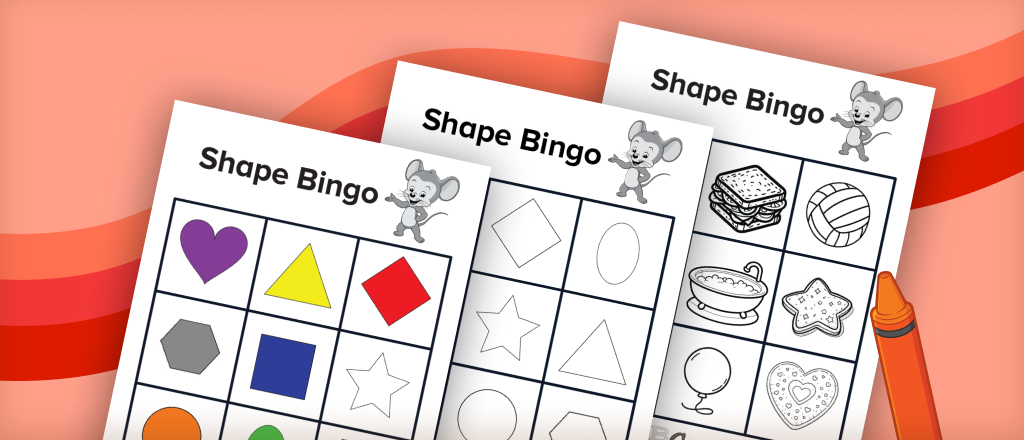
Our Shape Bingo cards showcase a variety of shapes, including circles, squares, rectangles, and triangles. Pick from a black and white version for those who enjoy coloring, a pre-colored version ready for immediate play, and a version featuring objects that represent different shapes.
How To:
1
Print out our fun, free shape bingo cards, making sure each player has their own.
2
Use the provided calling sheet to cut out each shape and place them into an envelope. During gameplay, draw a shape from the envelope, announce it, and have children locate and mark the corresponding shape on their card. The game is won when a child lines up three shapes in a row!
3
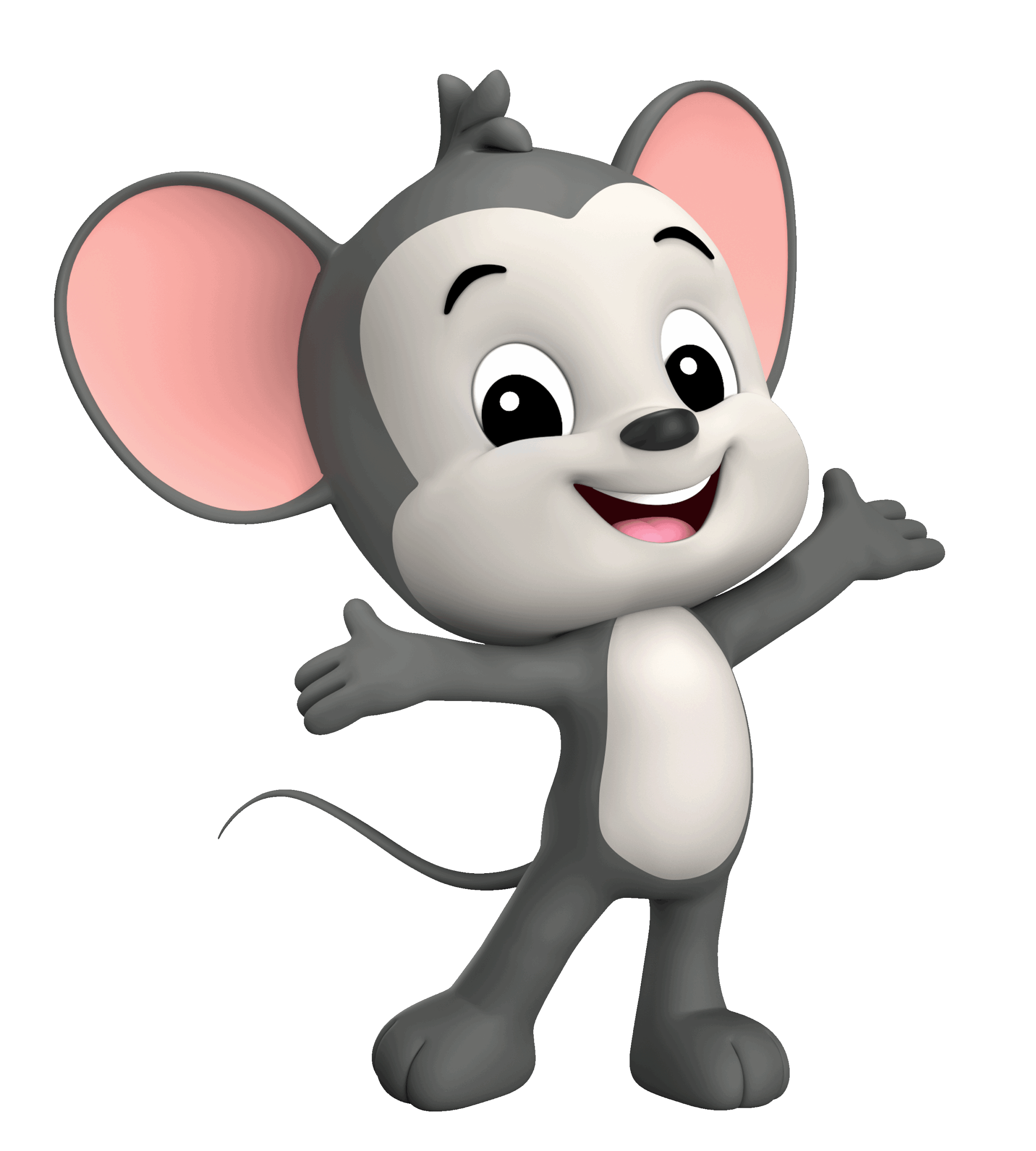
Benefits of this Activity:
- Playing games like this adds fun to the learning experience and is an effective way to help a group of children learn.
- By incorporating visual shapes with the words you call out, Shape Bingo helps children commit their names to memory.
2. Create Popsicle Stick Shapes
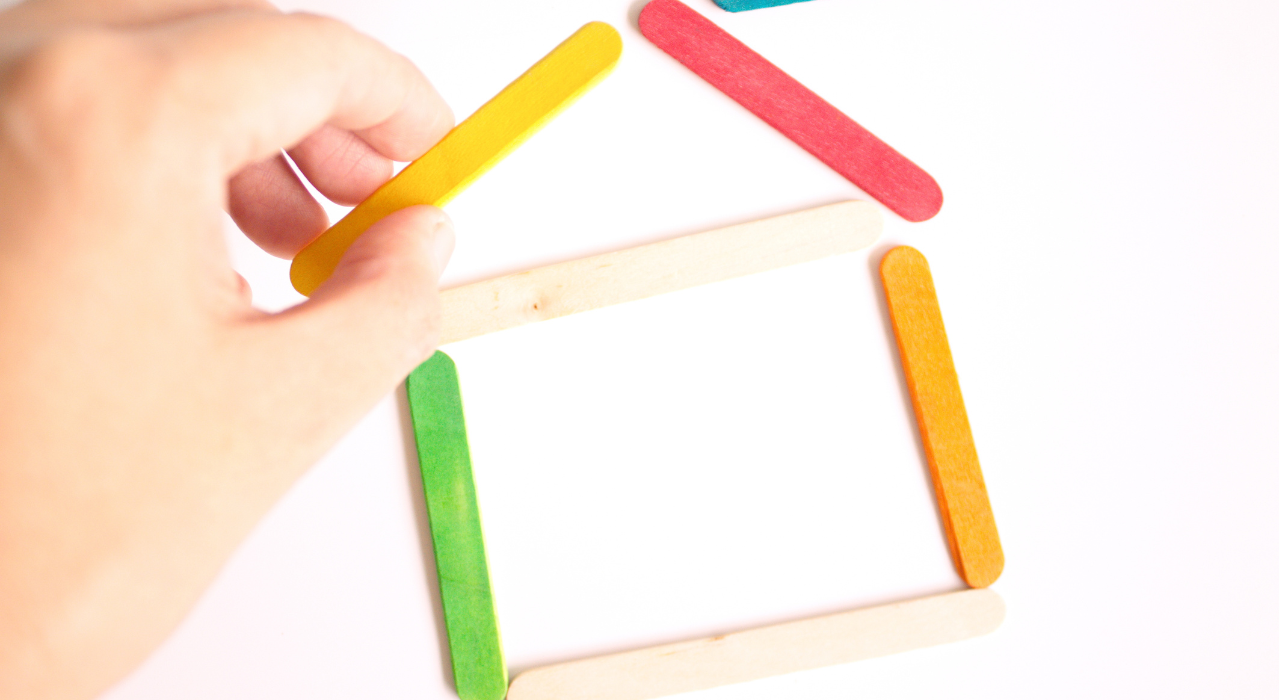
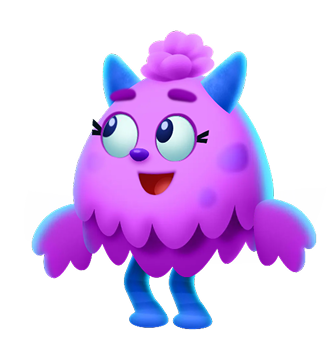
How To:
1
Draw basic straight-line shapes such as a square, rectangle, or triangle. Have your child put liquid school glue on popsicle sticks or craft sticks, and place one on each line of the drawn shape. Alternatively, your child can experiment with arranging the popsicle sticks on a piece of paper to create a shape on their own. Then they can glue the popsicle sticks down.
2
Example:
Draw a square on the paper. Put glue on one side of four popsicle sticks. Place each stick, glue-side down, on each side of the square. Move on to creating triangles and rectangles next.
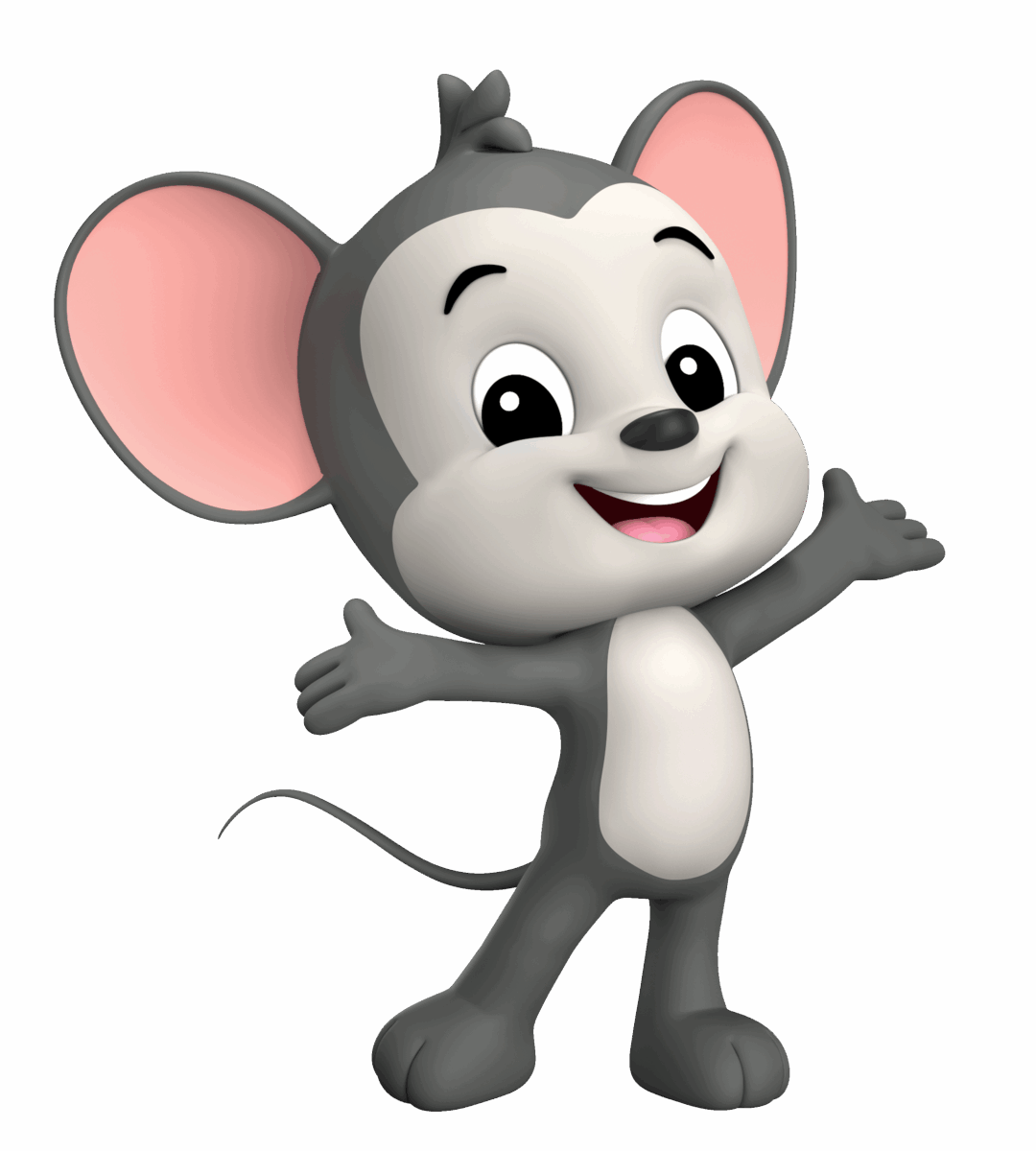
Benefits of this Activity:
- This tactile activity allows children to touch, feel, and see how many sides are needed to create a given shape.
- Using popsicle sticks to create shapes helps reinforce how many sides each shape has and highlights that several different shapes can be created with straight lines.
3. Shape Tracing Fun
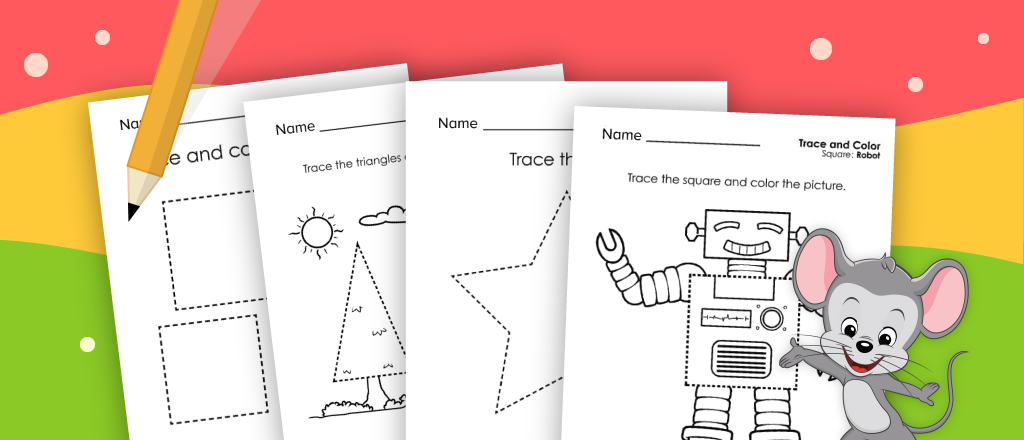
Introduce your child to the basics of shape identification with our free printable shape worksheets.
How To:
1
You can start by using our Shape Tracing Worksheets, which include simple outlines of 2D shapes like circles, squares, triangles, and rectangles.
2
Provide your child with a variety of writing tools, like colored pencils, markers, or crayons, and encourage them to trace these shapes first before coloring them in.
3

Benefits of this Activity:
- Tracing shapes helps children develop fine motor skills and spatial awareness and reinforces their ability to identify and differentiate between shapes.
4. Shape Animals
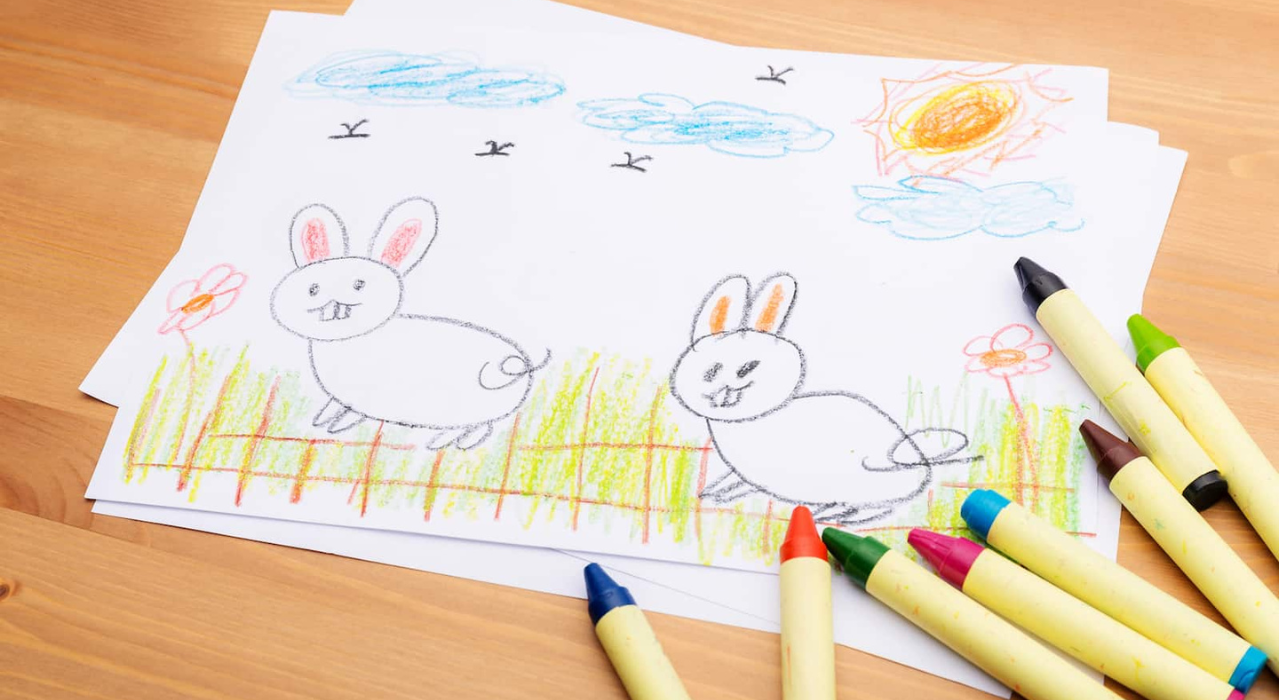
Grab some crayons and construction paper or a sketch pad. Have your child draw a picture of an adorable bunny rabbit using a variety of different shapes!
How to Play:
1
Draw a large horizontal oval (think of an egg on its side) for the body.
2
Draw a medium-sized circle on one side of the oval to be the bunny’s head. Draw a small circle on the other end to be the bunny’s tail.
3
Draw four more small circles at the bottom of the oval to be the bunny’s feet.
4
Draw tall triangles on the bunny’s head to be its ears and tiny rectangles to its cute little buck teeth. Don’t forget to make straight lines for whiskers!
6
Tip:
Have your child use their imagination and creativity to draw other animals, such as cats and fish, using only shapes.

Benefits of this Activity:
- This creative activity helps reinforce your child’s understanding of basic shapes. Drawing the different parts of the animal gives children practice in shape recognition while fostering their creativity.
- Children utilize their fine motor skills by having to draw shapes of different sizes.
5. Listen to Catchy Shape Songs
This one is great for younger children and provides an opportunity to get some movement in too!
How To:
1
Just do a quick search using keywords such as “shape song lyrics for preschoolers” or “easy shape song lyrics,” and you’ll discover lots of musical gems. Sing along with your child, and enjoy a fun way to learn about shapes.
2
Tip:
Follow up this video with the song Shawna’s 3D Shapes by ABCmouse, introducing kids to more advanced shapes, like cones, cylinders, pyramids, and more!

Benefits of this Activity:
- By singing along and watching the corresponding videos, children can better learn to recognize and remember what shapes look like.
- Looking around the house for shapes that appeared in the song helps reinforce a child’s recognition of the shapes long after the music ended.
6. Go on a Shape Scavenger Hunt

Enjoy exploring the great outdoors in search of shapes that naturally occur in nature!
How To:
1
Go on a walk with your child and ask them to spot shapes in nature and point to what they’ve found. (You can also do this in your backyard if you don’t have a park or natural space nearby.)
2
Example:
During your outdoor adventure, ask your child to look for anything in nature shaped like a circle. They can look for a small pond, a tree stump, or a rock. You can also look for triangles and four-sided figures. They’re out there in nature if you search hard enough!

Benefits of this Activity:
- After a traditional lesson about shapes, a scavenger hunt is a great way to put that new-found knowledge into action and gives children a hands-on way to experience what they are learning.
- The challenge of searching for shapes outdoors adds adventure to learning.
- As they walk and explore, looking up, down and all around, children are incorporating movement into the learning process.
7. Play Unicorn Catcher Shapes Game
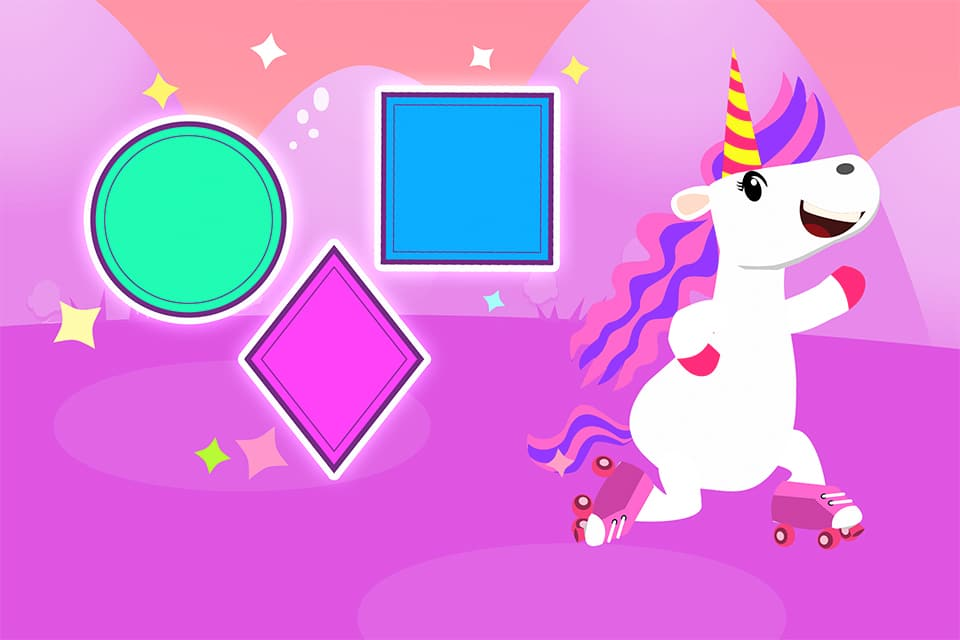
Learn basic shapes like circles, squares, and triangles by playing free ABCmouse games. In this game, kids help guide a skating unicorn to catch each shape. Be sure to check out more of our free online learning games for kids!
How To:
1
Launch the game and guide the unicorn as different shapes appear on the screen. Your child will need to move the unicorn left or right to catch the correct shape, turning learning into a fun challenge.
2
Name each shape out loud together as it’s caught. For younger children, you can model by saying “That’s a triangle!” while older kids can practice saying the names on their own, reinforcing vocabulary and recognition.
3
Build confidence step by step by starting with Simple Shapes and moving on to More Shapes and Advanced Shapes when your child is ready. Cheer them on as they play!
Choose From These Game Levels:
- Unicorn Catcher: Simple Shapes – Focuses on beginner-friendly shapes like circles, squares, and triangles.
- Unicorn Catcher: More Shapes – Introduces slightly more advanced forms like rectangles, ovals, and semicircles.
- Unicorn Catcher: Advanced Shapes – Challenges kids with pentagons, hexagons, and octagons, strengthening shape vocabulary and recognition.

Benefits of this Activity:
- Builds strong shape recognition skills through interactive play.
- Expands geometry vocabulary step by step, from simple to advanced.
- Improves fine motor skills and spatial awareness as kids guide the unicorn.
- Keeps learning fun and motivating, encouraging children to keep practicing.
8. Make a Shape Place Mat
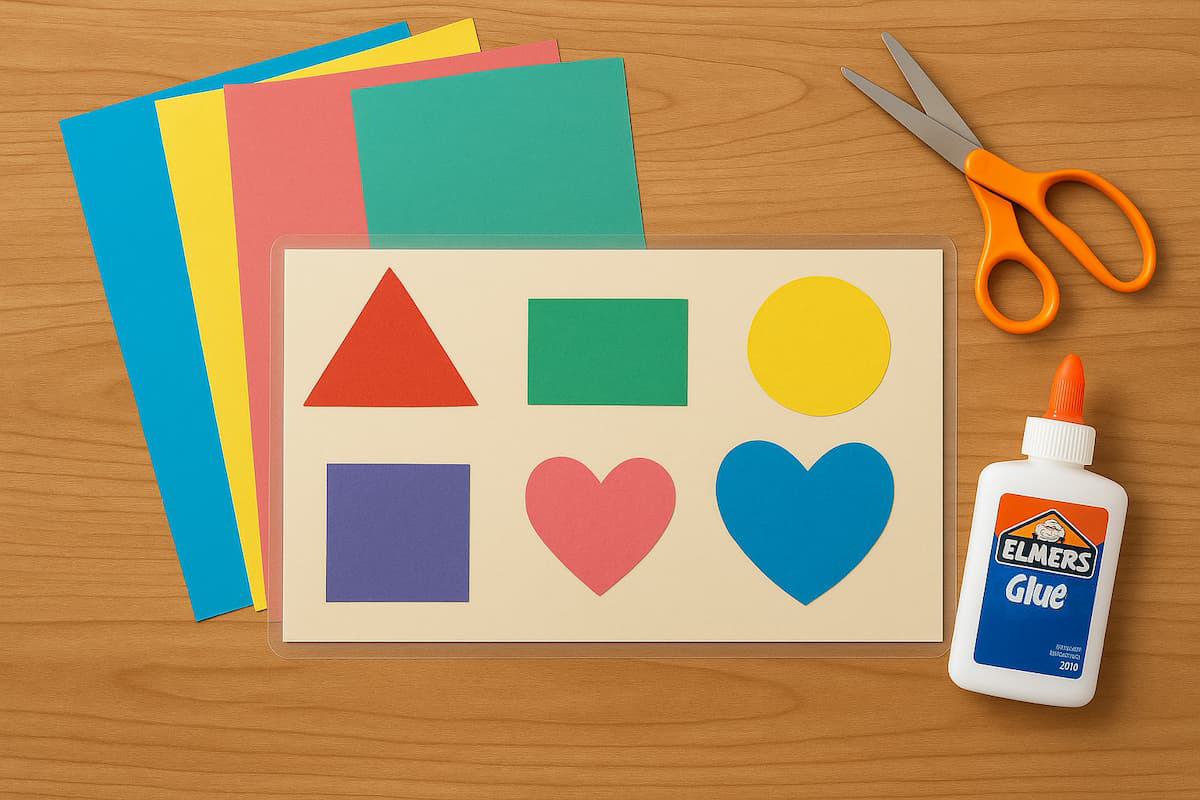
For this craft, you’ll need card stock paper, construction paper, clear contact paper, Elmer’s glue and scissors.
How To:
1
Have your child draw shapes on different colored sheets of construction paper.
2
Work with your child to use a safety scissors to cut out the shapes and glue them onto a piece of card stock (similar in size to a traditional placemat).
3
Apply the contact paper directly over the card stock. You’ll then have a practical placemat decorated with shapes that your child can enjoy and practice identifying while eating.
4
Example:
Use pink construction paper for squares, yellow for triangles, blue for circles…or just mix it up in a variety of shapes and colors.

Benefits of this Activity:
- Like many craft activities, it provides hands-on learning that engages children and fosters creativity.
- Children utilize their fine motor skills by having to draw shapes, cut paper and glue items together.
9. Shape-Tac-Toe
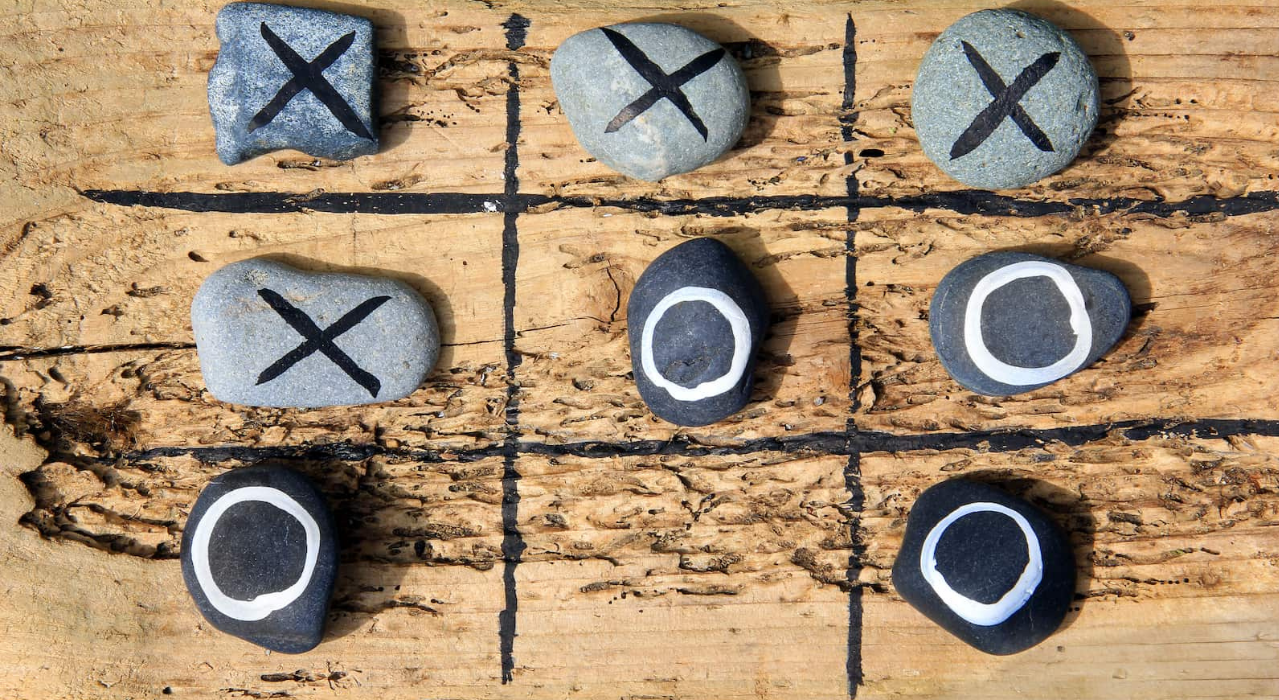
Forget X’s and O’s! Change up the classic game of tic-tac-toe by using fun shapes instead. Plus, it’s a game that’s easy enough to play anywhere, whether you’re at home, waiting for a doctor’s appointment, or playing at the park.
How To:
1
Draw the traditional tic-tac-toe board in the hashtag (pound) design.
2
Have your child choose a shape, you choose another, and whoever gets three of their shapes in a row (across, down, or diagonal) wins.

Benefits of this Activity:
- Playing games like tic-tac-toe helps improve concentration and focus.
- Children see and create patterns, which helps develop visual processing and working memory functions.
10. Shape Coloring Pages
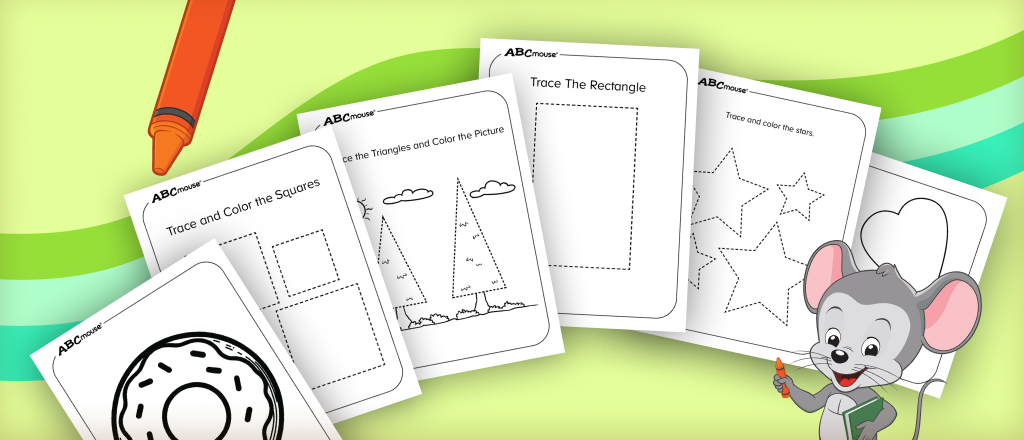
Print out our collection of Shape Coloring Pages for simple practice at home, in the classroom, or on the go. Ranging from circles and squares to stars and hearts, each coloring sheet gives kids a creative way to explore different shapes.
How To:
1
If your child is just starting to learn shapes, give them several coloring pages featuring the same shape.
2
Guide your child to trace and color the shape. Discuss the properties of the shape, such as the number of sides and points, helping them to recognize the characteristics that distinguish that shape from others.
3
Once your child is familiar with several shapes, lay out their coloring pages and talk about the similarities and differences they see in the shapes.

Benefits of this Activity:
- Helps children develop hand-eye coordination and visualization.
- Children have to focus and strategize, thus improving concentration while developing a good foundation for problem-solving skills.
- Reinforces shape recognition.
11. Play Shapes at the Zoo: All Shapes
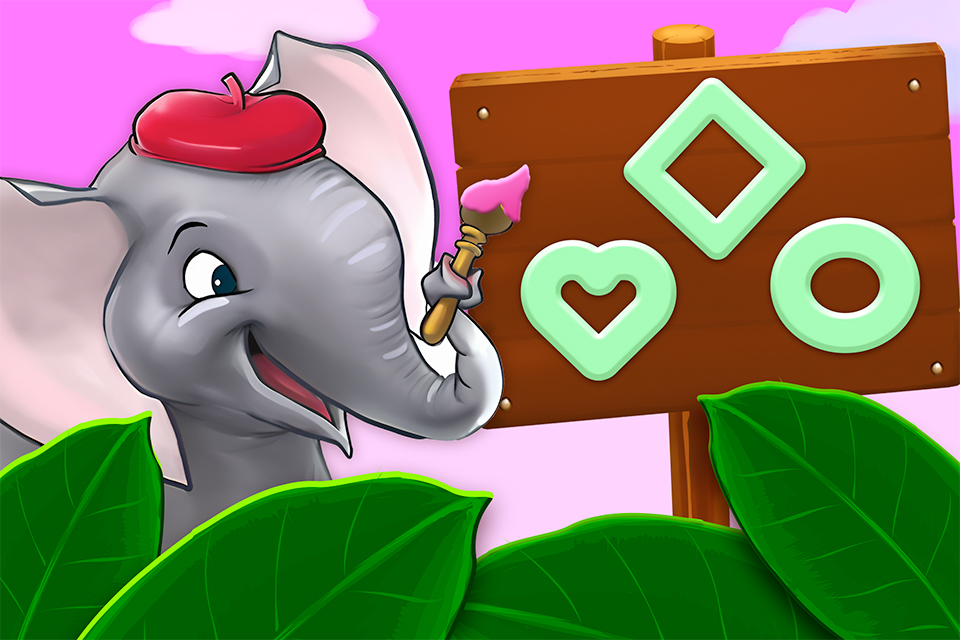
If your child loves animals, this zoo-themed game is a perfect way to review shapes while having fun. In Shapes at the Zoo: All Shapes from ABCmouse, kids help zoo animals while identifying a wide variety of shapes all in one place.
How To:
1
2
A friendly elephant will paint two shapes on separate signs. Children will be asked to find the specific shape.
3
Encourage your child to compare shapes as they go (for example, “How is a rectangle different from a square?”).

Benefits of this Activity:
- Provides comprehensive practice, as it reviews multiple shapes in one game, reinforcing knowledge in a fun, engaging way.
- Kids learn to notice similarities and differences between shapes, strengthening geometry foundations.
- Identifying and selecting shapes helps with categorization, a key early math skill.
12. Make a Square Puzzle
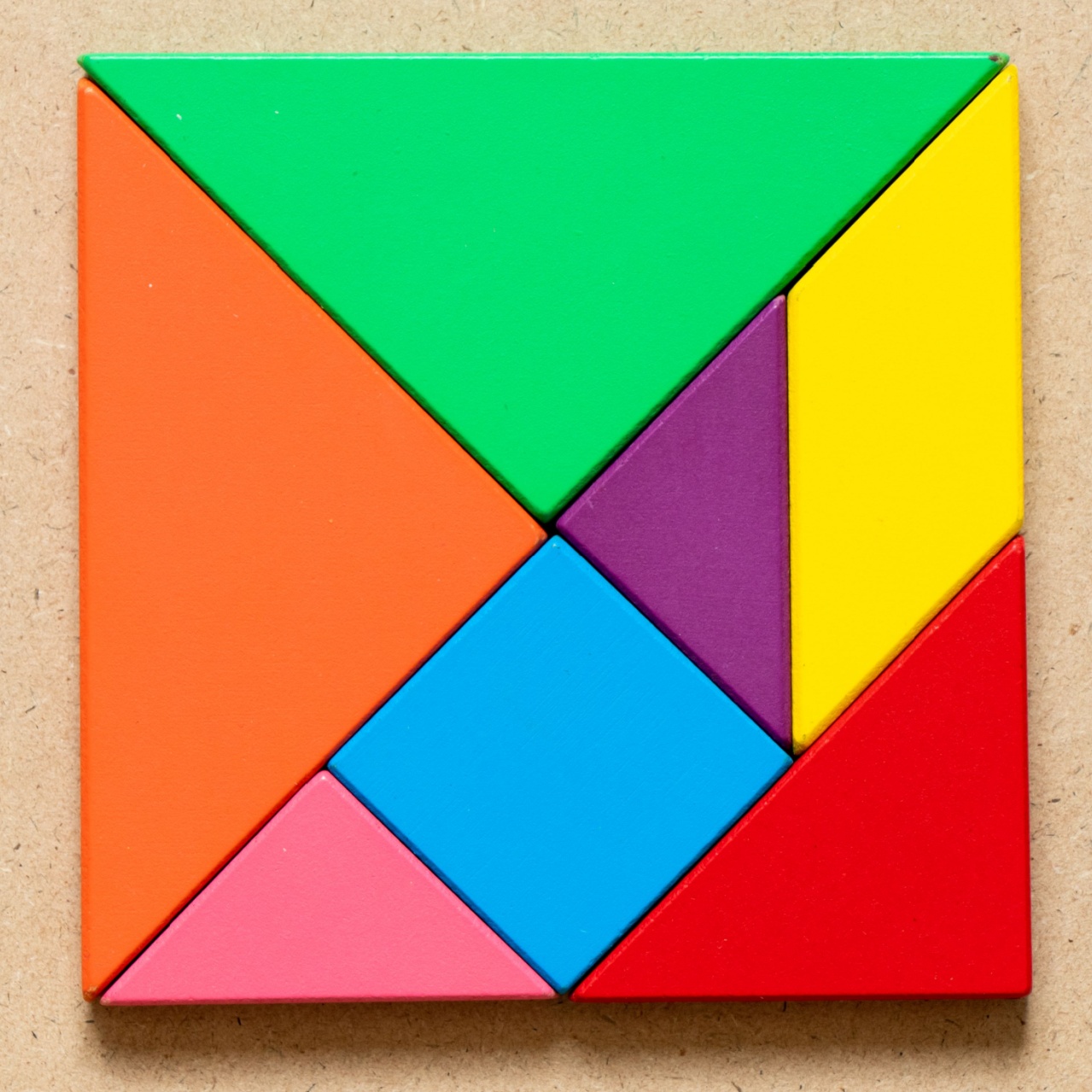
Use construction paper in different shapes and colors to create your very own tangram puzzle.
How To:
1
Draw shapes on a piece of paper (any color). Be sure to use the entire piece of paper.
2
Cut out the shapes, then, instruct your child to use the shapes as puzzle pieces to put the piece of paper back together again.
3
Example:
Draw a square. Next to it, draw two triangles that are flush to the side of the square. The idea is to keep the shapes symmetrical so everything fits back together to form the piece of paper easily, like putting together a puzzle. (Note: It’s easier to stick with four-sided shapes and triangles for this activity.)

Benefits of this Activity:
- Kids practice shape recognition as they see how squares, triangles, and rectangles fit together.
- Matching the pieces back builds logic and spatial reasoning skills.
- Cutting and arranging shapes strengthens fine motor skills.
13. Color-by-Shape Worksheets
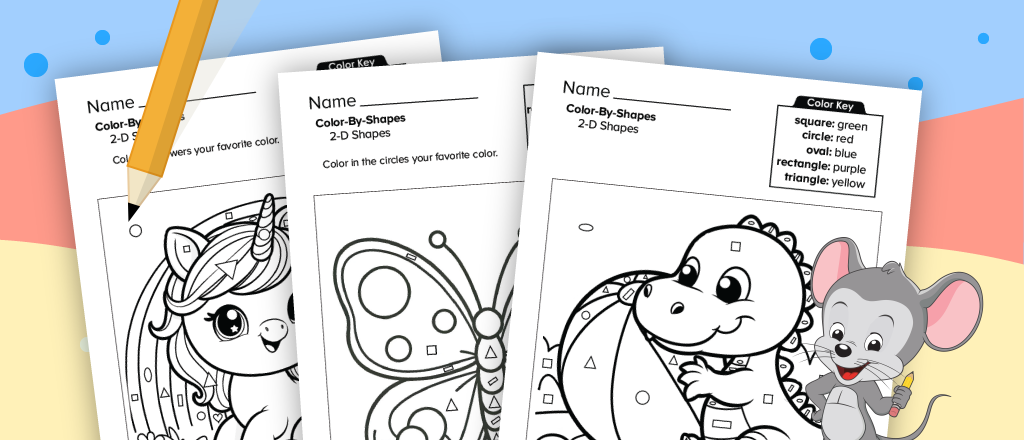
With Color-by-Shape Worksheets, children practice shape recognition while bringing pictures to life with color. Each worksheet shows an image divided into smaller sections, and each section is labeled with a shape.
How To:
1
Print out our free Color-by-Shape Worksheets.
2
Review the color key with your child (for example: circles = blue, squares = green, triangles = red).
3
Have your child carefully color each section of the worksheet using the correct color for the shape shown.

Benefits of this Activity:
- Reinforces shape recognition in a creative, hands-on way.
- Encourages focus and attention to detail as children carefully match shapes to colors.
- Blends art and math skills, making learning feel playful and rewarding.
14. Playdough Shape Mats
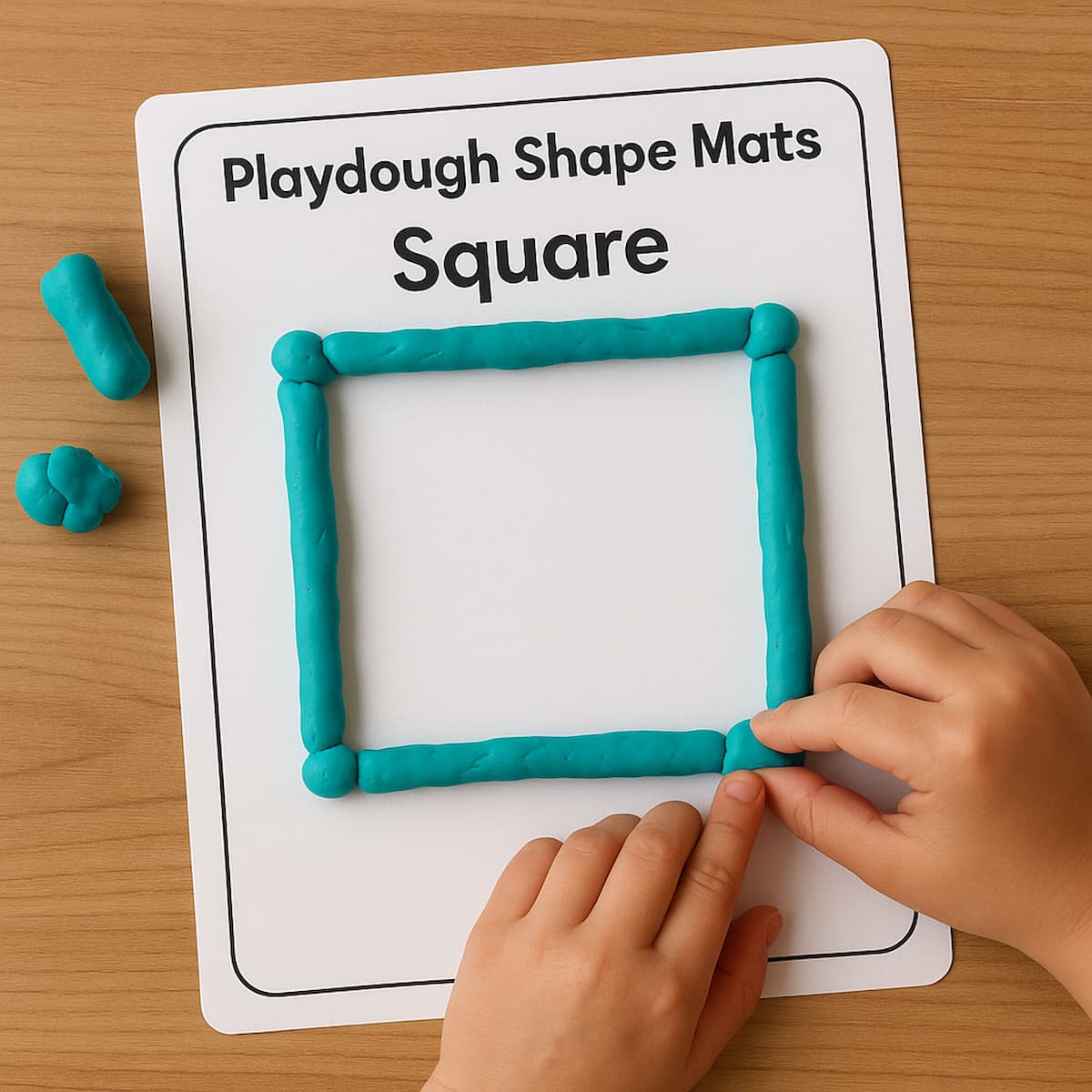
Playdough shape mats are a hands-on way for children to practice forming and recognizing shapes. Using playdough, kids can roll, pinch, and press to create the sides of each shape, building both fine motor skills and shape knowledge at the same time.
How To:
1
Print out our free printable shape pages to use as playdough mats.
2
Give your child some playdough and show them how to roll it into “snakes.”
3
Place the playdough along the edges of the shape outline to form the square, triangle, circle, or any other shape.
4
Encourage your child to say the name of the shape as they build it.
5
Example:
If you’re working on a square, have your child roll out four pieces of playdough and line them up along each side of the square outline. Add little playdough “dots” at the corners to reinforce the four points of a square.

Benefits of this Activity:
- Strengthens fine motor skills as children roll, pinch, and shape the playdough.
- Reinforces shape recognition in a tactile, engaging way.
- Encourages concentration and hand-eye coordination.
- Makes learning interactive and fun, especially for preschoolers.
15. Shape Sensory Bags
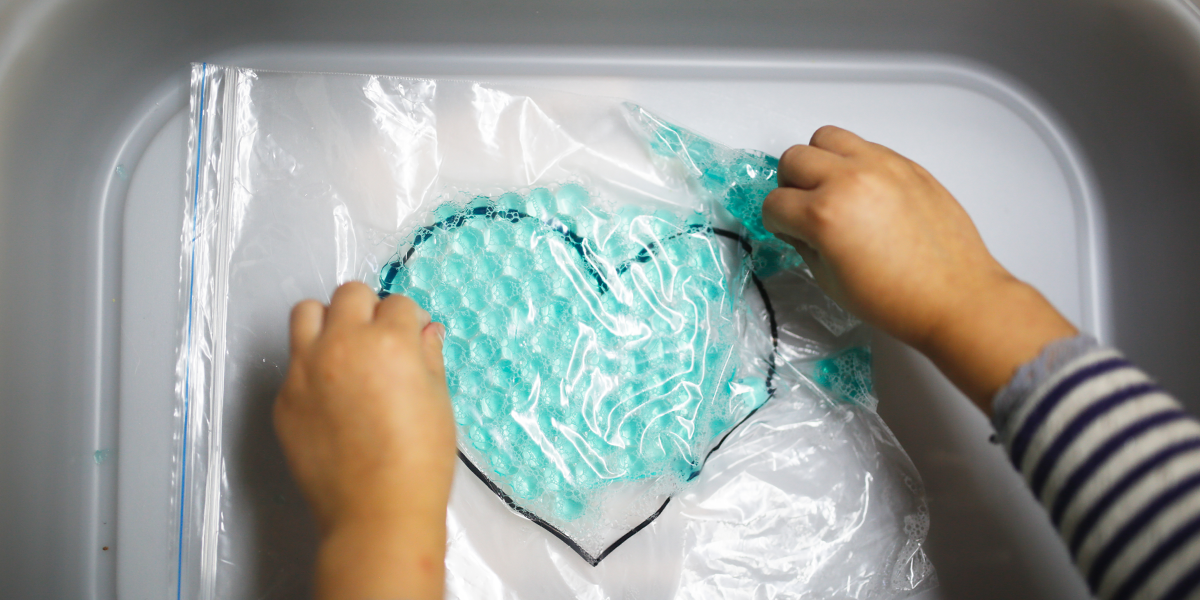
Shape Sensory Bags are a mess-free way to combine hands-on sensory play with shape recognition. Children can press, squish, and trace shapes while strengthening fine motor skills and focus.
Tip: Make a set of bags with different shapes and rotate them for variety.
How To:
1
Fill a large resealable plastic bag with hair gel, water beads, or shaving cream. Seal it tightly (you can tape the edges for extra security).
2
On the outside of the bag, draw a shape outline—like a circle, square, or diamond—using a permanent marker.
3
Place the bag on a tray or in a bin, then invite your child to press and move the filling around inside the bag, staying within the shape outline.
4
Encourage your child to name the shape they are tracing as they play.
5
Example:
If you draw a diamond on the bag, your child can squish the gel into the outline and trace along the edges with their fingers, outlining the diamond’s straight sides and points.

Benefits of this Activity:
- Provides a sensory-rich experience that keeps kids calm and engaged.
- Reinforces shape recognition in a tactile way.
- Builds fine motor strength and finger coordination, important for pre-writing skills.
- Encourages focus and concentration as children work to stay within the shape outline.
16. Shape Stamping with Potatoes
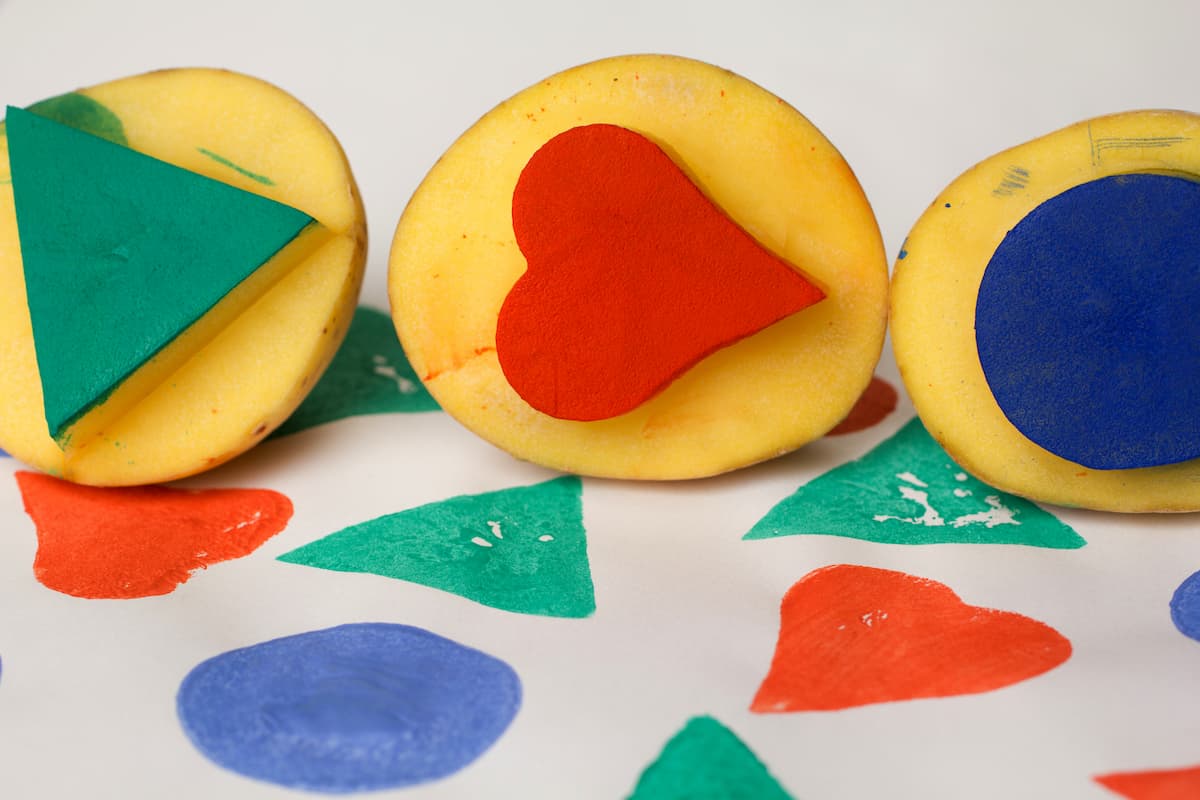
Turn everyday potatoes into fun shape stamps! This classic craft combines art and math as children explore different shapes through stamping.
How To:
1
Cut a potato in half and carve a simple shape (like a circle, triangle, square, or heart) into the flat side.
2
Dip the potato stamp into washable paint, then press it firmly onto paper to create colorful prints.
3
Repeat with different shapes and colors to make patterns, collages, or even wrapping paper.
4
Example:
Stamp red hearts, blue circles, and green triangles in rows to create a playful pattern. Encourage your child to name each shape as they stamp.

Benefits of this Activity:
- Builds shape recognition while children create their own artwork.
- Strengthens fine motor skills and hand-eye coordination.
- Teaches patterning and sequencing when stamping in rows or repeating shapes.
17. Shape Cookie Cutter Fun
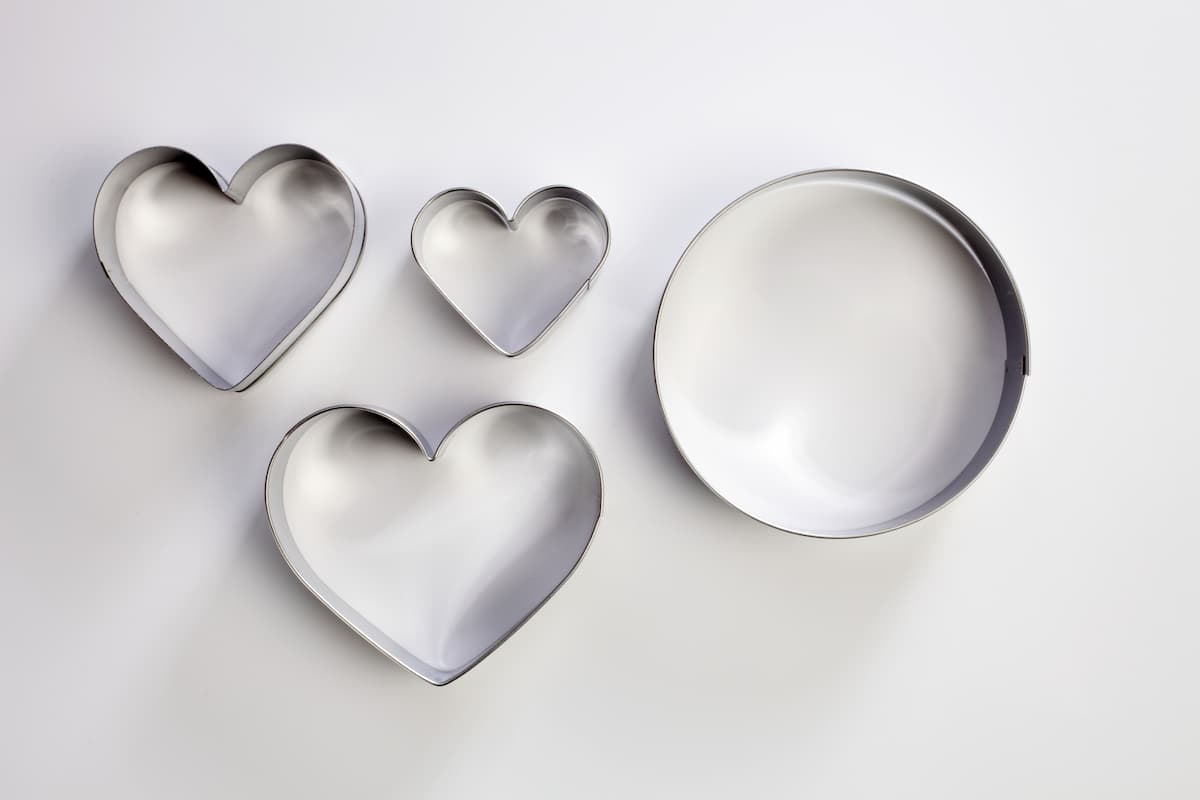
Cookie cutters aren’t just for baking—they make wonderful tools for learning shapes through art and play.
How To:
1
Gather cookie cutters in a variety of shapes (circles, hearts, stars, squares, etc.).
2
Dip the cookie cutters into washable paint or stamp pads, then press them onto paper to make colorful shape prints.
3
Alternatively, use them with playdough or clay to cut out shape designs for 3D play. Encourage your child to name each shape as they stamp or cut.
4
Example:
Dip a heart cookie cutter into red paint and stamp across a page to create a pattern. Or roll out playdough and cut out circles and squares to make a “playdough pizza” topped with different shapes.

Benefits of this Activity:
- Builds shape recognition while children create their own artwork.
- Strengthens fine motor skills and hand-eye coordination.
- Teaches patterning and sequencing when stamping in rows or repeating shapes.
18. Try Digital Shape Jigsaw Puzzles
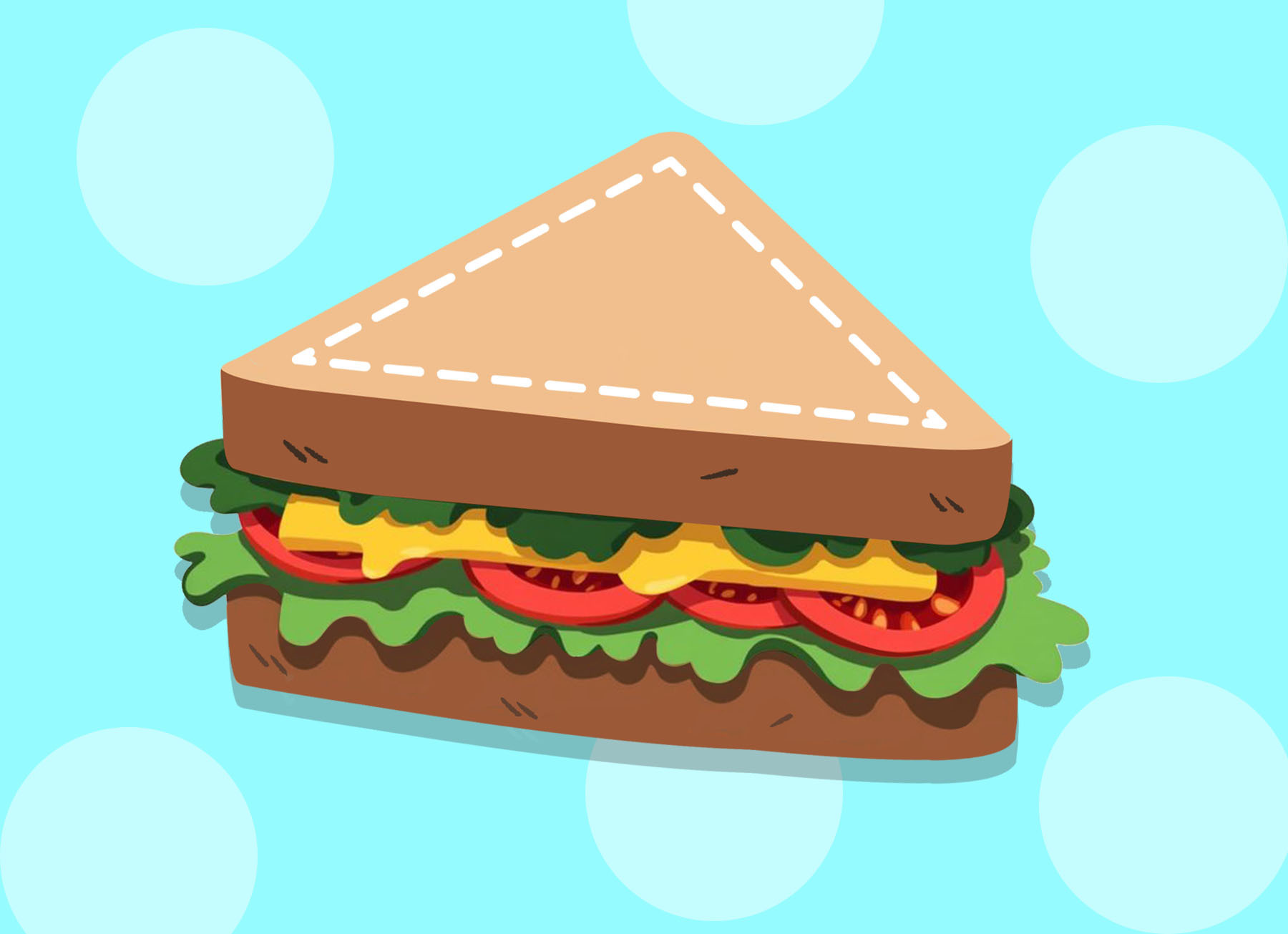
Shape jigsaw puzzles combine problem-solving with shape recognition in a playful way. Children complete familiar images while reinforcing their understanding of basic shapes like circles, squares, and triangles.
How To:
2
Have your child drag and place the pieces until the picture is complete.
3
Encourage them to say the name of the shape as they work (“This puzzle is a circle!”).
4
Free Shape Jigsaw Puzzles:
Triangle Jigsaw Puzzle – Sandwich: Solve a puzzle of a sandwich to reinforce the triangle shape.
Circle Jigsaw Puzzle – Kitten Ball: Complete an image of a kitten with a circular ball to highlight the concept of circles.
Square Jigsaw Puzzle – Kittens on Boxes: Put together a scene featuring playful kittens and square boxes.

Benefits of this Activity:
- Reinforces shape recognition by connecting shapes to real-world objects.
- Builds spatial awareness and problem-solving skills as kids fit puzzle pieces together.
- Expands vocabulary and background knowledge with fun animal and everyday object images.
- Encourages focus and persistence in a rewarding, game-like format.
19. Make Shape Cookies
How To:
1
Follow along with our Instagram video to learn how to practice with shapes while enjoying a homemade treat!

Benefits of this Activity:
- Practice with shape recognition in that’s hands-on and engaging.
- Learn about baking and measuring ingredients, which naturally lends itself to math practice.
- Spend quality time together in the kitchen and then enjoy your cookies together!

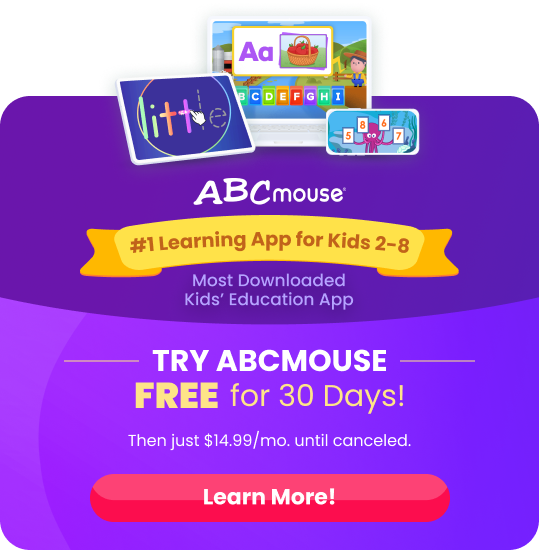
Get started with the ABCmouse app today and watch your child work to grow their letter sound skills in a fun and interactive way!


